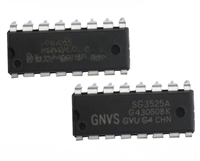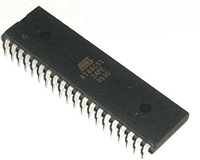| 是否无铅: | 不含铅 | 是否Rohs认证: | 符合 |
| 生命周期: | Active | 零件包装代码: | QFN |
| 包装说明: | HVQCCN, | 针数: | 64 |
| Reach Compliance Code: | unknown | 风险等级: | 5.68 |
| 系列: | 9516 | 输入调节: | DIFFERENTIAL MUX |
| JESD-30 代码: | S-XQCC-N64 | JESD-609代码: | e3 |
| 长度: | 9 mm | 逻辑集成电路类型: | PLL BASED CLOCK DRIVER |
| 湿度敏感等级: | 3 | 功能数量: | 1 |
| 反相输出次数: | 端子数量: | 64 | |
| 实输出次数: | 10 | 最高工作温度: | 85 °C |
| 最低工作温度: | -40 °C | 输出特性: | 3-STATE |
| 封装主体材料: | UNSPECIFIED | 封装代码: | HVQCCN |
| 封装形状: | SQUARE | 封装形式: | CHIP CARRIER, HEAT SINK/SLUG, VERY THIN PROFILE |
| 峰值回流温度(摄氏度): | 260 | 传播延迟(tpd): | 2.6 ns |
| 认证状态: | COMMERCIAL | Same Edge Skew-Max(tskwd): | 0.675 ns |
| 座面最大高度: | 1 mm | 最大供电电压 (Vsup): | 3.465 V |
| 最小供电电压 (Vsup): | 3.135 V | 标称供电电压 (Vsup): | 3.3 V |
| 表面贴装: | YES | 温度等级: | INDUSTRIAL |
| 端子面层: | MATTE TIN | 端子形式: | NO LEAD |
| 端子节距: | 0.5 mm | 端子位置: | QUAD |
| 处于峰值回流温度下的最长时间: | 40 | 宽度: | 9 mm |
| 最小 fmax: | 2950 MHz | Base Number Matches: | 1 |
| 型号 | 品牌 | 描述 | 获取价格 | 数据表 |
| AD9516-0BCPZ-REEL7 | ADI | 14-Output Clock Generator with Integrated 2.8 GHz VCO |
获取价格 |

|
| AD9516-1 | ADI | 14-Output Clock Generator with Integrated 2.5 GHz VCO |
获取价格 |

|
| AD9516-1/PCBZ | ADI | 14-Output Clock Generator with Integrated 2.5 GHz VCO |
获取价格 |

|
| AD9516-1BCPZ | ADI | 14-Output Clock Generator with Integrated 2.5 GHz VCO |
获取价格 |

|
| AD9516-1BCPZ-REEL7 | ADI | 14-Output Clock Generator with Integrated 2.5 GHz VCO |
获取价格 |

|
| AD9516-2 | ADI | 14-Output Clock Generator with Integrated 2.2 GHz VCO |
获取价格 |

|
 SG3525资料手册详解:SG3525参数分析、引脚说明、应用介绍
SG3525资料手册详解:SG3525参数分析、引脚说明、应用介绍

 AT89C51单片机资料手册详细解析及应用示例
AT89C51单片机资料手册详细解析及应用示例

 CP2102资料手册解读:CP2102引脚说明、关键参数分析
CP2102资料手册解读:CP2102引脚说明、关键参数分析

 资料手册解读:UC3842参数和管脚说明
资料手册解读:UC3842参数和管脚说明
